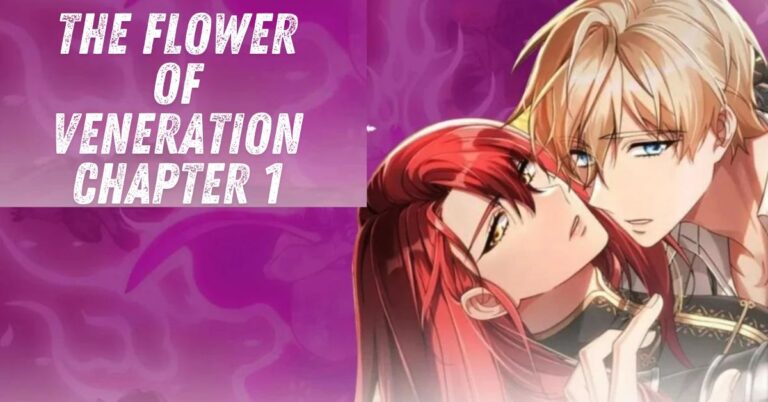Introduction to the Flower of Veneration
The Flower Of Veneration Chapter 1 is more than just a pretty bloom; it’s a symbol woven into the fabric of various cultures and traditions. Its petals whisper stories of reverence, spirituality, and ancient wisdom that have captivated hearts for generations. As we delve into Chapter 1 of this enchanting journey, prepare to explore the rich history, profound symbolism, and enduring significance behind this remarkable flower. From its mystical origins to its modern-day applications, the Flower of Veneration beckons us to discover why it continues to evoke such deep respect across the globe. Join us as we unfold its petals one by one!
A Brief History of the Flower’s Origin
The Flower Of Veneration Chapter 1 has roots that stretch deep into the annals of history. Ancient texts reveal its presence in ceremonies and rituals across various civilizations, signifying respect and reverence.
Some scholars trace its lineage back to the early Egyptians, who adorned their temples with vibrant blooms as offerings to their gods. This custom symbolized purity and devotion.
In Asia, particularly in India, this flower held significant importance within spiritual practices. Used during pujas or worship ceremonies, it bridged the gap between humanity and the divine.
As trade routes expanded over centuries, this cherished bloom found its way into different cultures. Each society adopted it uniquely, layering additional meanings onto its already rich tapestry of significance.
Today’s interpretations are a blend of these historical influences — an eternal testament to its enduring legacy across time and space.
The Symbolism and Importance of the Flower in Different Cultures
Across various cultures, the flower has held profound symbolism. In many Asian traditions, it represents purity and renewal. The lotus, for example, emerges from murky waters to bloom beautifully—a reminder of resilience.
In Western societies, flowers often signify love and passion. The red rose is a universal emblem of romance and desire. Different colors evoke distinct emotions; yellow can symbolize friendship while white signifies innocence.
Indigenous cultures view flowers as sacred gifts from nature. They are used in rituals to honor ancestors or celebrate life events.
In some African communities, specific blooms convey messages during ceremonies—each petal telling a unique story of heritage and identity. These diverse meanings demonstrate how the same flower can take on varied significance across the globe, uniting people through shared appreciation while celebrating individual interpretations.
Legends and Myths Surrounding the Flower
Throughout history, the Flower Of Veneration Chapter 1 has woven its way into countless legends and myths. Many cultures attribute divine origins to this flower, believing it was a gift from the gods to humanity.
In some tales, it is said that a goddess wept for her lost love, and where her tears fell, these beautiful flowers bloomed in honor of enduring affection. Their vibrant colors are often interpreted as symbols of passion and remembrance.
Another story tells of an ancient warrior who carried the flower into battle for protection. It became a talisman against harm, signifying bravery and hope amidst chaos.
These narratives have transformed the flower into more than just a botanical marvel; they carry deep emotional resonance that transcends time and geography. Each legend adds layers to its significance while captivating hearts across generations.
The Spiritual Significance of the Flower in Various Religions
The Flower Of Veneration Chapter 1 holds deep spiritual significance in various religions across the globe. In Buddhism, for instance, it symbolizes purity and enlightenment. The lotus flower rises from muddy waters to bloom beautifully, representing the journey toward spiritual awakening.
In Hinduism, this flower is often associated with deities like Lakshmi and Saraswati. It embodies prosperity and wisdom, serving as a reminder of divine beauty and grace.
In Christianity, flowers frequently symbolize resurrection and new beginnings. During significant ceremonies, they enhance sacred spaces with their vibrant colors and fragrances.
Indigenous cultures also revere specific blooms for their connection to nature spirits. These flowers are seen as messengers between the earthly realm and the divine.
Each religion interprets this flower uniquely yet collectively acknowledges its role in bridging human experiences with higher consciousness.The Flower Of Veneration Chapter 1 This multifaceted symbolism adds layers to its revered status across traditions.
Medicinal and Healing Properties of the Flower
The Flower Of Veneration Chapter 1 is not just a visual delight; it boasts an impressive array of medicinal properties. Many cultures have harnessed its healing potential for centuries, using various parts to treat ailments.
This flower is known for its anti-inflammatory effects. Traditional herbalists often recommend infusions made from the petals to soothe skin irritations and reduce swelling.
Additionally, certain compounds found in the flower are believed to possess antioxidant qualities. These can help combat oxidative stress in the body, promoting overall wellness.
Some practitioners use extracts from this flower as a natural remedy for anxiety and depression. Its calming aroma has been incorporated into aromatherapy practices, providing mental clarity and emotional balance.
Research continues to explore its full range of benefits, revealing even more reasons why this revered bloom holds such a special place in both ancient traditions and modern medicine The Flower Of Veneration Chapter 1.
Modern Uses and Cultivation Methods
The Flower Of Veneration Chapter 1 has found a special place in modern horticulture. Its striking beauty and rich symbolism make it a favorite among gardeners and floral enthusiasts alike.
Cultivation techniques have evolved, allowing for more accessible growing conditions. Many now propagate the flower in home gardens using cuttings or seeds, ensuring that its delicate blooms are within reach.
Hydroponics is gaining traction as well. This soilless method promotes faster growth and higher yields, appealing to urban farmers keen on sustainable practices.
In addition to ornamental uses, the flower is increasingly recognized for its potential in aromatherapy and natural remedies. Essential oils derived from it are popular among wellness advocates seeking holistic healing options.
Crafting DIY products with this revered bloom has become trendy too.The Flower Of Veneration Chapter 1 From homemade candles infused with fragrance to artisanal soaps showcasing its essence, creativity knows no bounds when celebrating this cherished blossom.
Conclusion: Why the Flower of Veneration Continues to Be Revered Today
The Flower Of Veneration Chapter 1 holds a special place in hearts and cultures around the world. Its rich history, steeped in symbolism and tradition, speaks to our innate desire for connection with nature and the divine. From ancient rituals to modern gardening practices, this flower has woven itself into various aspects of human life.
Its significance transcends geographical boundaries. Different cultures have embraced its beauty and attributed unique meanings to it.The Flower Of Veneration Chapter 1 The legends that surround the flower add layers to its allure, making it more than just a pretty bloom.
Moreover, many religions recognize the spiritual importance of The Flower Of Veneration Chapter 1. It serves as a bridge between earthly existence and higher realms, often used in ceremonies that invoke peace or healing. This spiritual aspect ties closely with its medicinal properties—offering both physical benefits and emotional solace.
Today’s cultivation methods reflect an increasing appreciation for sustainable practices. Gardeners are drawn not only by its aesthetic appeal but also by its historical roots and therapeutic potential The Flower Of Veneration Chapter 1.
As we navigate through modern challenges, this flower remains relevant. It inspires us to pause amidst chaos—a reminder of beauty found in simplicity and reverence for life itself. Whether admired on windowsills or celebrated during sacred rites, The Flower Of Veneration Chapter 1 continues to be cherished across generations, fostering connections among people everywhere who seek meaning beyond mere petals.

















